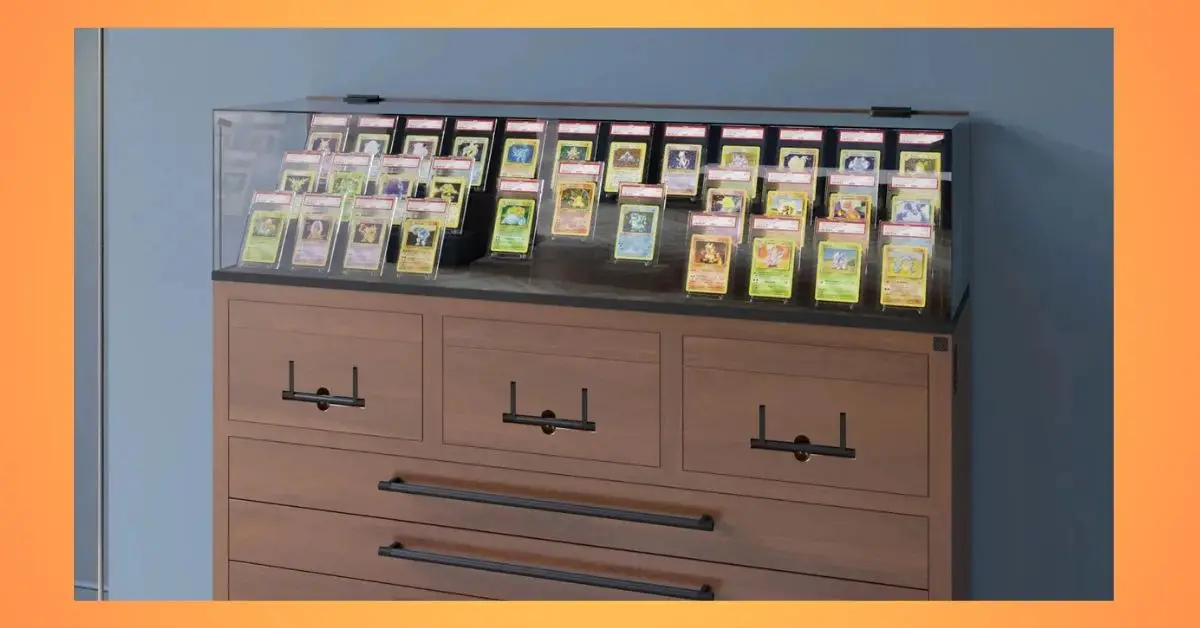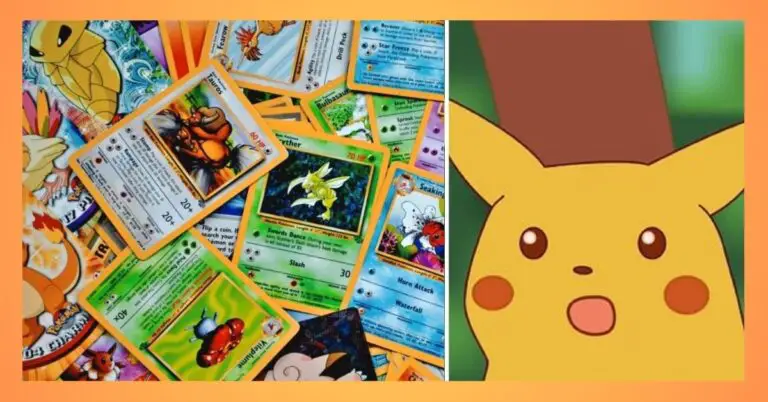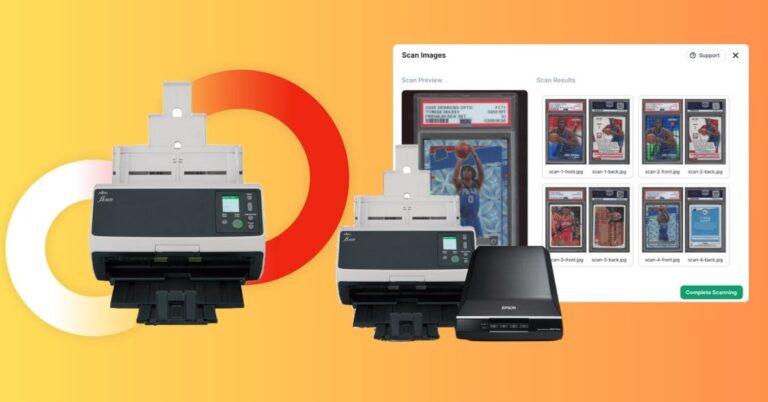Trading Card Grading and Display | The Ultimate Guide
In the world of trading cards, every collector knows that a card’s condition can be as crucial as its rarity. Trading cards have transcended their role as mere collectibles to become coveted assets that can appreciate significantly in value.
But what exactly is card grading, and how are trading cards graded? The Trading Card Grading and Display process key factors like centering, corners, surfaces, and edges—each playing a crucial role in determining a card’s overall condition and market value.
we delve into the art form of displaying these treasured pieces. We’ll discover that proper storage not only protects your investment but also showcases it beautifully.
What is Trading Card Grading and Display?
Card grading plays a pivotal role in the trading card industry, particularly for collectors and investors alike. It goes beyond basic visual inspection; specialized services meticulously evaluate a card’s centering, edges, corners, and surface to determine its overall condition.
Those looking to sell or trade their collections often find that graded cards hold significantly higher market value than their ungraded counterparts. This can be particularly crucial in the realm of rare or vintage cards where small imperfections can drastically affect worth.
This meticulous process not only elevates a card’s status within the market but also serves as a safeguard against counterfeits, ensuring that what you hold in your hand is both authentic and valuable. that relic into a prized asset worth hundreds or even thousands of dollars.
Importance Of Card Grading
Standardization:
- Standardization in card grading is crucial for fostering trust in a market often driven by subjective opinions. When collectors and investors know the grading scale used—whether it’s PSA, BGS, or another system—they can accurately assess a card’s condition and value.
Value Enhancement:
- The value enhancement provided by card grading is a significant factor in the trading card market. Graded cards, especially those that achieve high marks from reputable grading services, can reach multiples of their ungraded counterparts.
Protection:
- Encapsulation is a fundamental aspect of card grading that contributes significantly to the preservation of trading cards. When a card undergoes this process.
- It is sealed in a durable plastic holder that shields it from moisture, dust, and potential physical harm from handling or environmental factors.
Key Factors in Card Grading
Professional graders meticulously assess the aspect, as it sheds light on the printing quality and attention to detail at the time of production. This significance not only influences individual card value but also impacts other cards from a particular set—therefore understanding how to grade trading cards requires keen observation of centering.
Centering:
- A card that boasts perfect centering—The image is precisely aligned within its borders—grabs attention and exudes a sense of rarity and quality. It’s essential to note that while absolute 50/50 centering may be an ideal benchmark, many collectors overlook slight deviations on historical cards or those from limited print runs.
- Graders take meticulous measurements from left to right and top to bottom, often resulting in marked differences between grades due to even subtle misalignment.
Corners:
- The examination of corners plays an integral role in top-tier collectibles.corners are vital indicators of a card’s overall condition, serving as a hallmark for collectors and investors alike.
- Minor flaws—such as slight rounding or minute fraying—can have a cascading effect on the card’s grade and, consequently, its market value.
- Graders employ magnification tools to scrutinize these details meticulously; this level of Precision helps ensure that each card is graded fairly in relation to industry standards.
Surface:
- The surface condition of trading cards is a fundamental aspect of grading, as it can significantly influence a card’s market value. Inspectors utilize high-powered magnification tools to reveal minute imperfections that may not be visible to the naked eye.
- This meticulous examination often uncovers print defects, such as misalignments or variations in color saturation, which can detract from a card’s aesthetic appeal.
- Cards with glossy finishes or foil accents require special attention, as they are more prone to scratches and fingerprints that can diminish both their appearance and collectible worth.
Autographs:
- Featuring autographs, the signature’s quality plays a crucial role in determining overall value. Gradings are not just limited to the card’s condition; they extend to assessing the clarity and integrity of the autograph itself.
- A bold, well-preserved signature can elevate a card from merely collectible to highly sought-after memorabilia.
- Graders meticulously examine each autograph for signs of smudging or fading, with clear, vibrant signatures consistently earning premium grades.
Factors to Consider Before Grading
Condition:
- It’s crucial to recognize that the card’s condition dictates its market appeal and potential value. Perfect centering is essential; even a minuscule off-center can significantly decrease a card’s desirability, even if everything else checks out perfectly.
- Its sharp corners are non-negotiable; dulled or frayed edges not only indicate wear but also send signals of negligence to prospective buyers.
- It’s an artful balancing act— many collectors seek specific cards that may have historical significance or sentimental value, the difference in price often comes down to these aesthetic details.
Availability:
- Collectors must consider the interplay between availability and desirability.the principle of supply and demand plays a significant role in determining the value of any card within the market.
- Even cards that flood the market can fluctuate in price based on their desirability among collectors.
- For instance, a common card might suddenly become rare if it’s associated with a hot player or memorable event, leading to increased interest and higher prices due to limited availability.
Desirability:
- Desirability is a multifaceted concept that extends beyond basic rarity or condition. One crucial factor to consider is the player’s historical significance in the sport.
- Legendary players like Mickey Mantle and Mike Trout not only embody peak athletic performance but also represent milestones in baseball history that resonate with collectors.
- This emotional connection elevates their cards’ value, as fans often seek mementos of moments that defined eras.
Liquidity:
- When grading trading cards, liquidity should be one of the foremost factors to consider. It’s not just about the rarity of a card; demand plays an equally significant role.
- A rare card may have an impressive market valuation on paper, still its sales potential can be dampened if collectors or investors aren’t actively seeking it out.
- Understanding market trends and buyer behavior can offer insights into how quickly you might flip a card for cash.
Grading Companies: An Overview
PSA (Professional Sports Authenticator)
PSA, or Professional Sports Authenticator, has carved a significant niche in the grading trading cards landscape since its inception in 1991. The rigorous grading scale from 1 to 10 not only establishes a clear hierarchy of card quality but also enhances collector confidence.
Cards receiving a grade of 10—designated as Gem Mint—represent the pinnacle of trading card excellence. This meticulous evaluation process examines centering, corners, edges, and surface quality, ensuring that each graded card is held to the highest standards.
Its commitment to protecting and preserving these assets goes beyond assessment; Each holder comes with detailed labels that enhance transparency about the card’s condition and history.
To showcase these prized possessions effectively, consider utilizing display solutions like the Display Vault Aircard Edition specifically designed for PSA slabs – it not only provides safe storage but also transforms your collection into an eye-catching centerpiece that highlights your dedication as a collector.
CGC (Certified Guaranty Company)
Its founding in 2000, evolving from comic book grading to encompass trading card assessment, including beloved franchises like Pokémon and Magic: The Gathering. Utilizing a strict 10-point grading scale related to other industry leaders, CGC’s particular evaluation process examines centering, corners, edges, and surface quality—elements that can dramatically influence a card’s value.
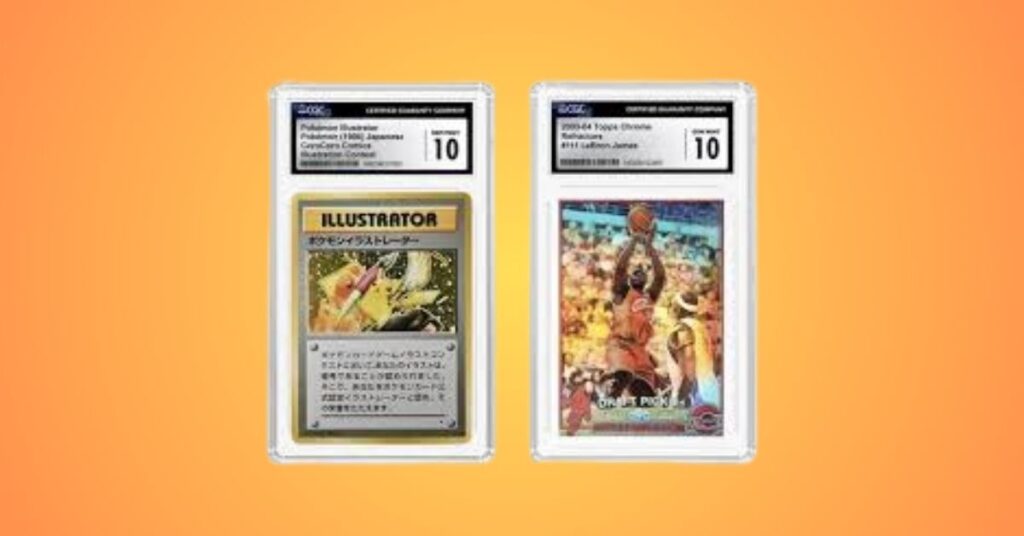
The exact grading process employed by CGC has solidified its reputation for accuracy and reliability within the collectibles community. Collectors often seek out graded items for investment To effectively display these valuable slabs, the Display Vault Aircard Edition serves as an excellent choice.
It allows collectors to showcase nine slabs beautifully while offering protection against environmental damage. This ready-to-use display case elevates aesthetics without compromising safety.
SGC (Sportscard Guaranty Corporation)
Its establishment in 1998. Renowned for its expertise in grading both vintage and modern trading cards, SGC employs a gradation 1 to 10 grading scale that includes half grades.
This meticulous approach allows collectors to understand how their treasures are evaluated—focusing on essential aspects like centering, corners, edges, and surface conditions. SGC’s grading consistency not only instills confidence among collectors but also enhances the resale value of graded cards.
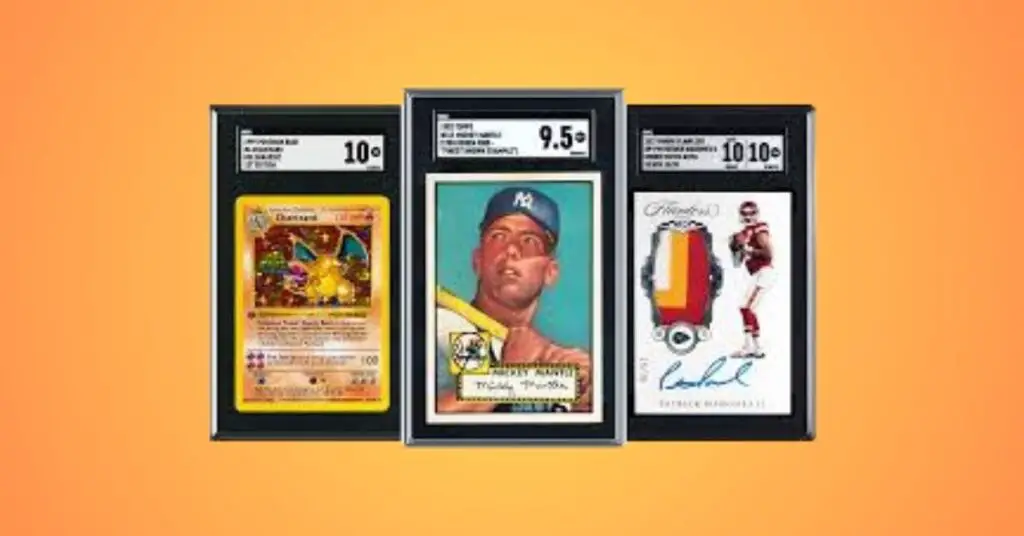
The special Display Vault Air Card Edition designed specifically for SGC slabs is worth noting. Featuring high-density EVA foam and a friction fit design, this display case ensures that up to nine graded cards are securely housed while showcasing them beautifully.
By integrating durability with aesthetics, it offers a sophisticated way to exhibit your prized possessions without compromising on protection.
BGS (Beckett Grading Services)
The evolution of card grading has taken a remarkable turn with the establishment of Beckett Grading Services (BGS) in 1999. Their meticulous grading process is a game-changer for collectors, focusing on four crucial subgrades: centering, corners, edges, and surface.
Each component is meticulously scrutinized and scored on a scale from 1 to 10, creating a comprehensive assessment that not only influences the market value but also enhances the collector’s experience.
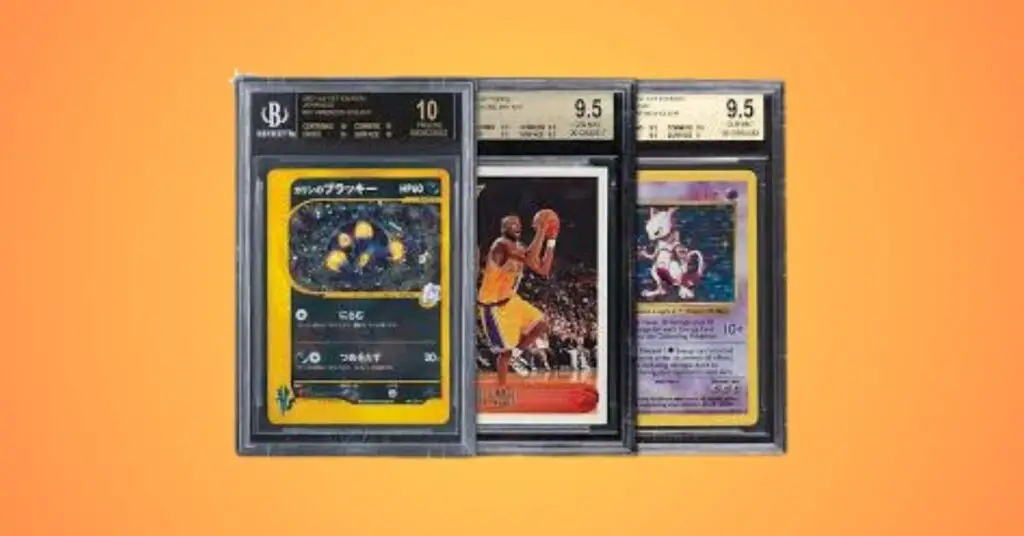
Its precise grading standards enhance the value and appeal of graded cards. The sleek design not only showcases the card beautifully but also includes a detailed label that provides transparency regarding its grade and subgrades.
The best way to display their prized possessions, the Display Vault Air Card Edition makes it easy with friction fit technology specifically designed for BGS slabs.
Elevate Your Collection: Other ways to display and storage your graded card collection
Display Vault Air Card Edition
For collectors who are passionate about grading trading cards, proper display and storage solutions are Enter the Display Vault Air Card Edition, which redefines how you can showcase your graded cards while keeping them safe from dust, moisture, and accidental damage.
Crafted with high-density EVA foam featuring Friction Fit technology, this innovative display guarantees a warm fit for cards.

The Display Vault’s shimmering carbon fiber finish elevates any space it occupies—whether it’s a dedicated collector’s den or a stylish living room. Its ultra-lightweight design makes installation a breeze; no complex assembly is required.
Designed to accommodate popular grading companies like PSA, CGC, SGC, BGS—and compatible with magnetic card holders.
Displaying their collection with style and sophistication. This versatile option not only enhances aesthetics but also emphasizes the importance of how trading cards are displayed to maintain their value in an ever-competitive market.
Display Vault Card Edition
When it comes to elevating your graded card collection, thoughtful display and storage solutions can make all the difference. The Display Vault Air Card Edition redefines maximum protection.
It’s hard shell exterior, augmented with ribbed aluminum side panels, is designed not just for aesthetics but also for durability against impacts and wear. This robust construction means that every trading card—whether it’s a coveted PSA 10 or an ultra-rare BGS slab—is safeguarded from potential damage.
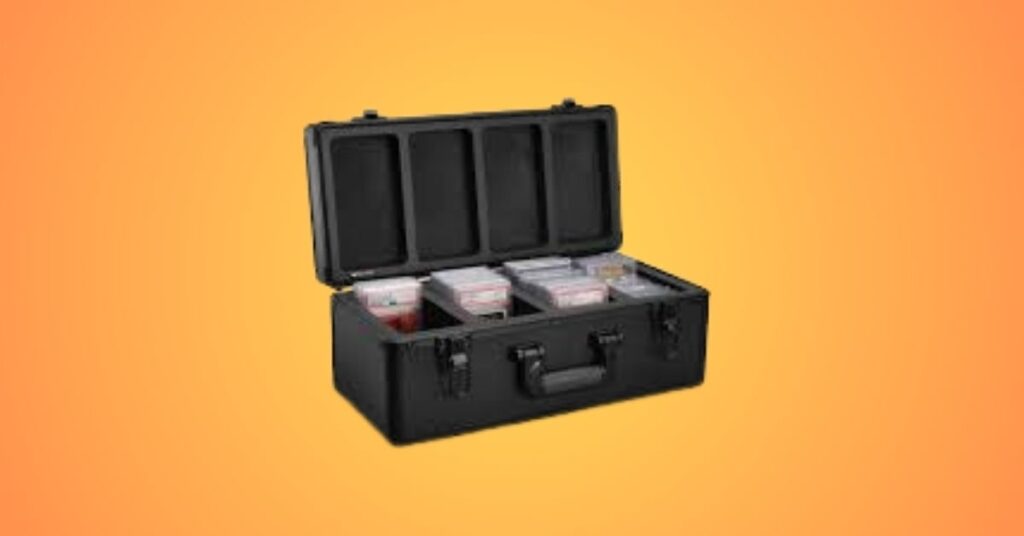
The scratch-resistant crystal-clear display window offers a pristine view of each card without any obstructions. Featuring high-density EVA foam inserts with a stylish carbon fiber pattern, the design promotes stability adding an eye-catching element to your collection’s presentation.
You’re showcasing 112 PSA cards or arranging 76 BGS pieces neatly within the cozy confines of this versatile storage box, ease of transportation makes it perfect for shows or trade events.
Display Vault Mini Card Edition
When it comes to highlighting graded card collections, the Display Vault Mini Card Edition offers an innovative solution that balances aesthetics with functionality. This compact storage box enhances our display game with its scratch-resistant, crystal-clear window.
The hard shell exterior coupled with ribbed aluminum side panels assures collectors of the safety and durability they need when on the go.
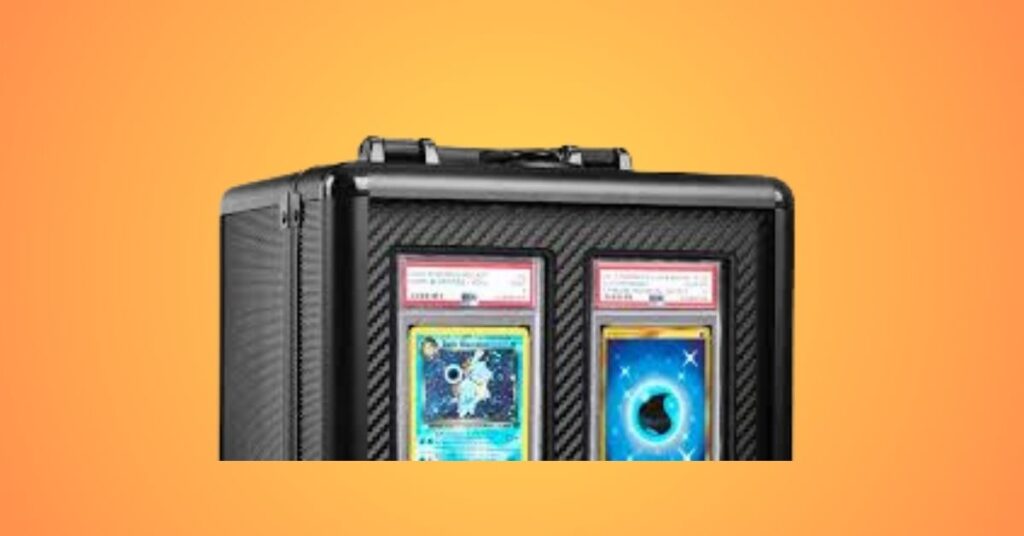
The high-density EVA foam insert provides excellent cushioning while maintaining stability for multiple grading standards—be it PSA, BGS, or Ultra-Pro One Touch slabs. In addition to practicality, the carbon fiber pattern subtly elevates the overall look of the case, making it a stylish accessory for any collector’s toolkit.
As collectors fine-tune their understanding of how trading cards are graded and valued over time, the Display Vault Mini Card Edition makes sure that every detail counts without sacrificing portability or protection.
Conclusion
Trading card grading and display is essential for both collectors and investors looking to maximize the value of their collections. By familiarizing yourself with the grading scales and best practices for preservation, you can ensure that your cards remain in optimal condition and attract potential buyers. Investing in high-quality display options not only enhances the aesthetic appeal of your collection but also protects it from environmental damage. With the right knowledge and tools, you can confidently navigate the world of trading card grading.
FAQs
What is Trading Card Grading?
Trading card grading is the process of evaluating a card’s condition, authenticity, and overall quality by professional grading services. Cards are assigned a numerical grade on a scale, typically from 1 to 10.
Why Should I get my Trading Cards Graded?
Grading enhances the value of your cards, provides authentication, and protects them from damage. A high-grade card can significantly increase its market value.
Can I Clean my Trading Cards Before Grading?
It’s best not to attempt cleaning your cards yourself as improper methods can cause further damage. Instead, leave it to professionals who have experience handling valuable collectibles.
What is the Difference between PSA, BGS, and SGC Grades?
PSA (Professional Sports Authenticator), BGS (Beckett Grading Services), and SGC (Sportscard Guaranty) are all recognized grading companies with different criteria for assessing quality; each offers varying scales for sub-grades along with overall scores.

